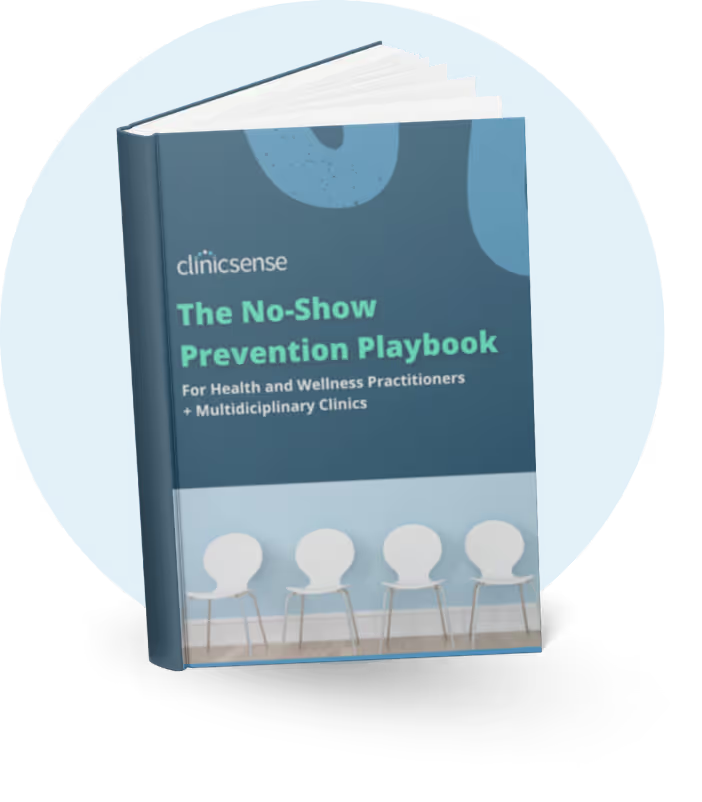Advice From Industry Experts
March 3, 2025

In a community Lunch & Learn session, we had the privilege of learning from Cassandra Tyagi, CPA and founder of Tyagi Group. She offered expert insights on optimizing bookkeeping and tax strategies tailored for health professionals. Her educational approach empowers health and wellness businesses to enhance their financial practices and secure significant savings.
You can check out the video replay of the lunch & learn below, or keep reading the article for a written break-down.
In this article, you will learn:
Let's explore the practical strategies Cassandra Tyagi shared to help you streamline your financial management and optimize your business finances.
Keeping your books up-to-date is essential to understanding the financial health of your business, as well as saving money on taxes. Employ a bookkeeping system that makes keeping track of finances easy. You can use a free option like an excel template or invest in bookkeeping software.
The most important thing is to do bookkeeping on a regular basis, so you don’t forget anything. ClinicSense financial reports ensure every sale is accounted for, but if you go weeks without updating your books, it’s easy to forget expenses. Not logging every expense will cost you at tax time because those expenses are tax deductible.
Tyagi recommends setting up a separate bank account and credit card for your business, even if you operate under your own name. That makes it easier to track expenses. Plus, if you’re ever audited, your bank statement will make it clear you’re being honest about deductions when the account is used solely for business transactions.

Quickbooks is the most commonly used bookkeeping software for small businesses. Whether you want to manage bookkeeping yourself or outsource the job, you can do it with Quickbooks. The software enables you to link your bank accounts for easy tracking, bill clients directly, and generate reports automatically.
Tyagi Group requires their clients to use Quickbooks because it’s an easy way to access their data. Tyagi’s system is built around this software. Using Quickbooks costs a small monthly fee, but it eliminates the need for much manual entry, which eliminates the risk of errors. After you set it up, profit/loss reports, balance sheets, and sales tax reports are generated automatically. You’ll need those reports when you file your taxes.
If you don’t want to pay for software and have time for manual entry, Tyagi Group has a free bookkeeping template you can use to track monthly income and expenses. It’s a spreadsheet that makes manual tracking fast and easy. You’ll have to manually track GST/HST and create your own reports, but it’s an efficient way to manage your bookkeeping if you don’t want to outsource or automate things.
As a sole proprietor, your tax payment is due on April 30th. However, your tax filing isn’t due until June 15th. GST/HST must be filed and paid by April 30th.
GST/HST are not part of your income. It’s simply a sales tax that you collect from your clients for CRA. Track it separately. If you’re using Quickbooks, GST/HST are tacked automatically after you set it up.
You have 2 filing options, known as elections, for GST/HST
The Regular Method is the default when filing your GST/HST. It’s reporting the actual GST/HST collected and spent. Your bookkeeping must break this down specifically.
The Quick Method is usually the best method for small businesses with sales less than $400,000 a year. With this election, it’s easy to calculate your net tax for GST/HST, and you don’t claim ITCs on regular purchases. It’s less bookkeeping, less math, and no complication if audited.
To calculate the amount GST/HST to remit, multiply revenue by the quick method remittance rate that applies to your situation. Then, you get a 1% credit on your first $30,000 of revenue, which saves you money.
Anything you purchase to run your business is considered an expense. Your expenses are deducted from your taxable income, thus lowering your tax bill. Here’s how Cassandra explained it, “If you spend money to make money, it’s deductible!”

Here’s a list of qualifying expenses from the “Statement of Business and Professional Activities” tax form used in your personal taxes:
Keeping track of all these expenses is why bookkeeping is so important. It can be a lot of work tracking all that, but it will save you money. Make tracking expenses a part of your regular routine, so you don’t miss anything.
Remember, that tax payment is due on April 30th, regardless of if you’re ready to file your taxes yet. Save a percentage of your revenue every month for estimated tax payments. Set it aside, in a separate bank account, so you have it when it’s due.
There are 3 components of personal income tax:
That depends on your tax bracket, which is based on how much you earn, as well as where you live. Different provinces have different tax rates. Tyagi suggests saving about 30% of your income for taxes if you earn $100k a year, give or take based on province.
Federal income tax brackets start at a minimum of 15%, but brackets fluctuate year to year based on inflation. The first bracket is always 15% regardless of your income. Any income above that bracket is charged the next level percentage rate. If you exceed that level, additional income is taxed at the next level. So on, and so forth.
Here’s a breakdown of 2023 Tax Brackets:
Cassandra Tyagi went in depth on ways to save money on your taxes. Bookkeeping is essential to saving money and avoiding an audit. Tracking your income and expenses is easy to do, especially with software. Just be sure to do it regularly, so you don’t miss anything.
Track your GST/HST separately, and don’t include it in your income. Save for taxes every month, by setting aside roughly 30% of your taxable income. If you follow Tyagi’s advice, you’ll have your full tax payment in the bank on April 30th and the documentation you need to file your taxes.
Ready to get feel more confident about your finances? With ClinicSense’s invoicing, payments, and reporting tools, you can have peace of mind about managing your money. Start your free ClinicSense trial today!


.avif)
.avif)
.avif)









For 14 days